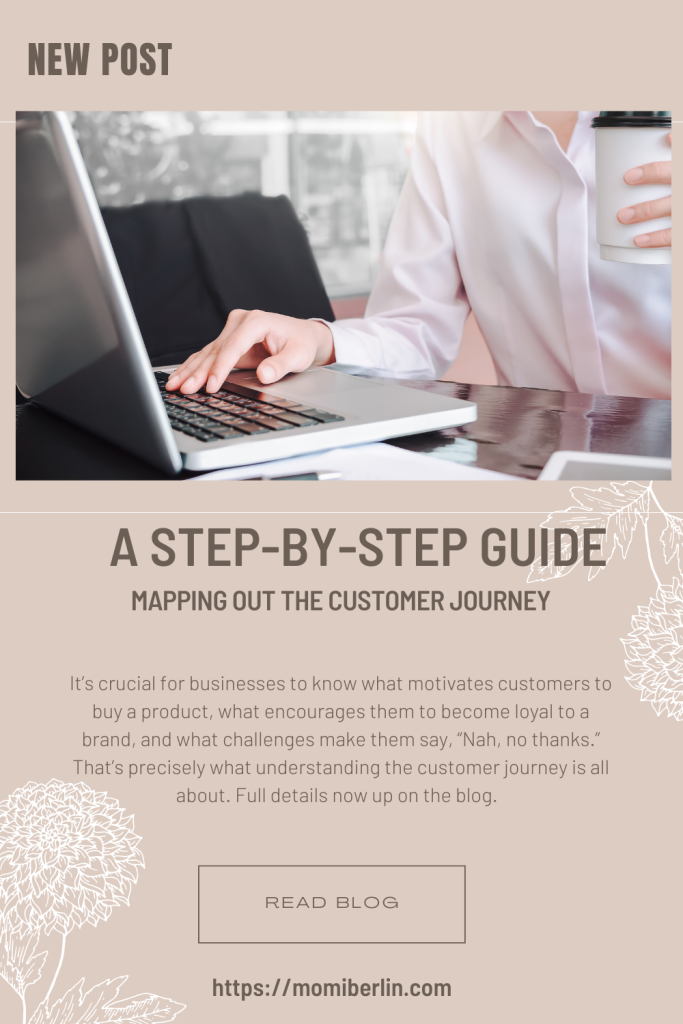A Step-by-Step Guide to Mapping Out Customer Journey
When a customer makes a purchase, it’s usually a decision that’s influenced by many factors, like a need, a want, or even an enticing ad on social media.

Even purchases that happen on what feels like a whim are, in reality, a culmination of a process that starts when a potential buyer realizes they have a problem that needs a solution.
Unfortunately, not everyone who engages with a business completes the journey with a purchase or conversion. The problem? Not being able to get inside customers’ minds and figure out what makes them add stuff to their carts AND why they abandon them at the check-out page.
It’s crucial, therefore, for businesses to know what motivates customers to buy a product, what encourages them to become loyal to a brand, and what challenges make them say, “Nah, no thanks.”
That’s precisely what understanding the customer journey is all about.
What is a Customer Journey
So what is a customer journey? It’s the process that covers all customer touchpoints with a brand starting from the time when customers become aware of a problem down to the point of making a purchase to solve it.
Every brand will have a unique customer journey that depends on what products or services they sell. That journey can be short or long, depending on what you need your customers to do. For instance, a product that customers see regularly at the supermarket may take a shorter customer journey than more expensive purchases, such as a car or a house.
In the case of the latter, the customer journey may have more touchpoints and could be more intricate because the customers will likely ask more questions, take longer to consider their options, and be more careful to make the right choice.
In general, there are five main stages in a customer journey:
Awareness
This is the point at which customers realize their pain points, wants, or needs. This is also the best time for brands to show up where customers are looking for answers, like in the form of educational videos or how-to blogs.
Consideration
At this stage, customers are beginning to consider their options. And that should include you. This, then, is your time to shine. Enticing marketing materials, strong product branding, and product-led or brand-centered solutions are great ways to keep your customers’ eyes on you.
Decision
After weighing their options, customers have come to the point where they’re ready to make a purchase. What you should be doing at this stage is making the buying experience smooth, hassle-free, and customer-centered to help customers complete the transaction.
It’s also during this stage that customers may choose to switch to a competitor brand or consider a different option. Keep them from doing so at all costs! This is also why hooking customers and having them stick with you during the awareness and consideration stages is crucial.
Retention
Once you have a successful purchase, the next step is to nurture the customer so that they stay with you. Here is where you’ll put your relationship-building strategies to use.
Advocacy or loyalty
Happy customers are your best brand advocates. They will naturally tell others about their great buy or seamless experience. But you can go even further by providing incentives when they make referrals in the form of discounts and product vouchers.
Why the Customer Journey Matters

Understanding the customer journey is crucial to a successful business. Here’s why:
Brings Insight into Customer Motivations
By knowing what motivates your customers’ actions, you get to effectively shape the customer experience to better suit their needs–to your advantage.
Enables Brands to Empathize with Customers
Customer actions, though motivated by a need to solve a problem, are also driven by emotions. The customer journey helps brands understand where customers are coming from and empathize with them to create a customer experience that gives them exactly what they need.
Improves the Buying Process
Understanding the customer journey also helps businesses create informed, smoother, and overall better buying processes to potentially help close the sale. It allows them to gain insights into what goes on in the minds of their customers at every stage of the journey.
How to Map the Customer Journey
Now that we know how important the customer journey is, let’s talk about how you can create your own customer journey map or a visual representation of what’s happening at every stage of the customer journey.
1. Create Buyer Personas
The first step to understanding the customer journey is getting to know your customers deeply. Your buyer personas are customer profiles that are built from your existing customer base. For a more in-depth study, you can create several profiles of your top buyers by getting feedback through questionnaires or surveys.
2. Set Clear Objectives for the Map
Every customer journey is different. Before you begin, determine what your goals are for mapping the customer journey at this time. This will help you ask crucial questions, identify all touchpoints, and see possible pain points that need to be addressed in order for you to achieve your objectives.
3. Determine Customer Intent
Every customer action is motivated by an intention. For a more informative map, identify customer intent at every stage of the customer journey. For instance, determine what bridges customers from the awareness to the consideration stage. What tools or product branding techniques were most useful for converting customers? What can you do without?
4. Identify All Customer Touchpoints
There are many customer touchpoints throughout a customer journey, beginning with them seeing your ad on social media or hearing about your products from a friend. Remember to take note of all touchpoints, including the negative ones that cause customers to turn to other options instead. These will provide you with plenty of insight into what needs to change.
5. Ask Key Questions
At every stage of the journey and depending on the goal of your map, ask the right questions. Some questions you might want to ask are:
● At what stage did most customers face the most problems?
● What issues caused customers to abandon their carts the most?
● What pages had the highest bounce rate?
● Which strategies were most effective at helping customers complete their transactions?

6. Make Changes Where Necessary
Your customer journey map is a treasure trove of information about your internal processes and strategies. If you’re facing high churn rates or frequently abandoned carts, this map will give you plenty of insight into the root of the problem.
As you draw crucial information from your map, make changes to your customer journey to address the pain points that were exposed and to create a smoother, more efficient customer experience.
The good news? You don’t have to do it alone. Partnering with a trusted PR agency is an effective way to craft impactful product branding techniques and develop a customer journey that caters exactly to your target market’s needs.














0 Comments